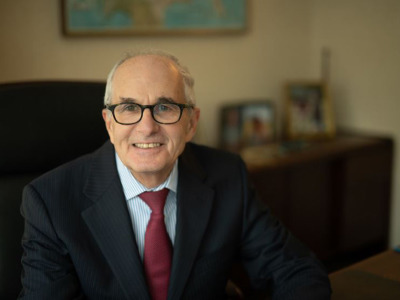The “Feed the Future” initiative is aimed at improving agriculture productivity and economic development around the world. Bipartisan legislation has been introduced in the both the House and Senate to make this discretionary program permanent. The legislation has the support of private sector corporations as well as non-profit public interest organizations. (H.R. 5656; S.2909) To use an old phrase, the initiative teaches people how to fish rather than just distributing fish. It deserves our attention.
For generations, the
Feed the Future was borne out of the President Obama’s
pledge at the 2009 G-8
In 2010, the Administration launched “Feed the Future”
(FTF), an initiative designed to expand and better coordinate the
On September 18, 2014 Chairman Chris Smith with Rep. Betty McCollum in the House introduced the Global Food Security Act of 2014 in the House. In the Senate the legislation was introduced by Senators Casey and Johanns with Senators Coons, Isakson, Cardin and Boozman.
The Global Food Security Act is based on the premise that
global food insecurity impacts not only the economies of developing nations but
also the international economy and
There is broad bipartisan support for sustaining Feed the Future due in large part to tremendous gains made over the past few years----
WORLDWIDE: Last year, Feed the Future helped more than 7 million smallholder farmers’ access new tools and technologies to help them improve yields and boost incomes. Feed the Future also reached 12.5 million children with nutrition interventions.
HONDURAS: More than 4,300 families are now well above the $1.25-per-day poverty line, thanks in part to Feed the Future’s efforts, which increased horticulture sales by 125 percent last year.
BANGLADESH: Feed the Future reached 3.3 million smallholder farmers with improved seed, fertilizer and farm management practices, helping farmers increase rice yields by as much as 20 percent and creating additional rice sales of $25 million.
SENEGAL: Feed the Future introduced a new breed of high-yielding, high-protein rice that helps smallholder farmers’ triple yields in a single year.
TANZANIA: Feed the Future helped increase horticulture yields by 44 percent and rice yields by more than 50 percent among farmers. The initiative assisted the Government of Tanzania in its efforts to turn the nation’s fertile south into a breadbasket.
 "Through Feed the Future, we are harnessing the power
of science, technology and innovation to unlock opportunities in agriculture for
the world's most vulnerable people," said USAID Administrator Dr. Rajiv
Shah. "By creating and scaling cutting-edge solutions to our most pressing
agricultural challenges, we can help the world’s most vulnerable people move
from dependency to self-sufficiency—and out of the tragic cycle of extreme
poverty.”
"Through Feed the Future, we are harnessing the power
of science, technology and innovation to unlock opportunities in agriculture for
the world's most vulnerable people," said USAID Administrator Dr. Rajiv
Shah. "By creating and scaling cutting-edge solutions to our most pressing
agricultural challenges, we can help the world’s most vulnerable people move
from dependency to self-sufficiency—and out of the tragic cycle of extreme
poverty.”USDA’s expertise is also critical in
this effort. From research and extension to market development and trade USDA
must play a central role for Feed the Future to be successful. Secretary Vilsack has executed a Memorandum
of Understanding with the
Feed the Future is not just a commitment of money, it is a new multi-department approach. Instead of merely providing food aid in times of crises, it establishes a new model to turn agriculture into a business—one that especially worked for women.
In short, the Global Food Security Act of 2014, the Smith (R-NJ) -Casey (D-PA) -Johanns (R-NE) legislation, compliments the successful PEPFAR program initiated by President Bush and uses our expertise in agriculture as the best possible foreign policy. The Global Food Security Act of 2014 presents an excellent opportunity to come together behind a piece of bipartisan legislation that puts our best foot forward as a country.
Marshall Matz, formerly Counsel to the Senate Committee on
Agriculture, specializes in global food security at OFW Law. He serves on the Board of Directors of the
World Food Program—

